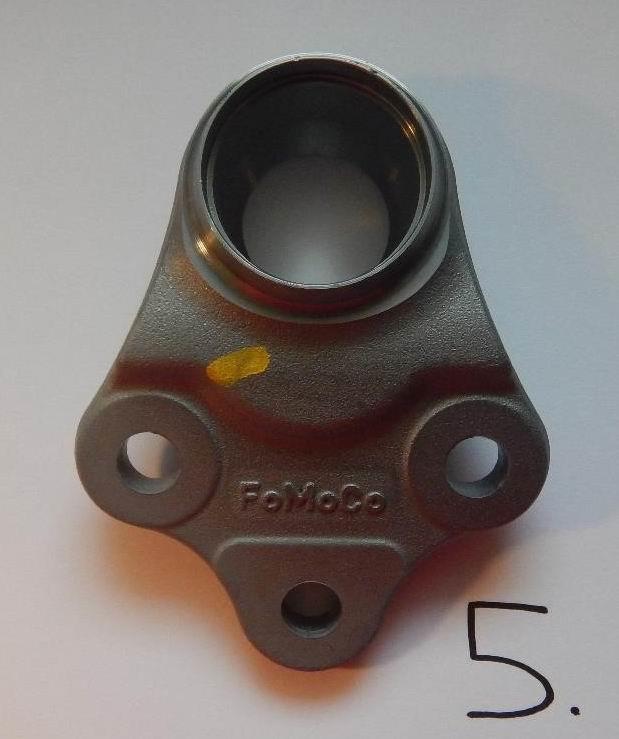
13 minute read
Prochazka, Miroslav Pristavka, Plamen Kangalov, Vladimir Krocko, Jan Zitnansky
from Agricultural, Forest and Transport Machinery and Technologies (ISSN: 2367– 5888) vol VI, 2019
by kangalov
Resistance of Nickel-Plated Components
Zdenek Donoval, Robert Prochazka, Miroslav Pristavka, Plamen Kangalov, Vladimir Krocko, Jan Zitnansky
Advertisement
Abstract: The article is aimed to evaluate the surface treatment by zinc-nickel alloy coating. The primary goal was to evaluat the thickness of the applied layer and the corrosion resistance of the component. Our team have described the process of applying Zn-Ni alloy coating, the coating thickness measurement and the corrosion resistance determination procedure. Subsequently, the Fisherscope X RAY XDL-B and the Liebisch Labortechnik SKB 1000 A-TR corrosion chamber are described. Results of the surface thickness measurement are recorded in the results.
Key words: plating, Zn-Ni alloy coating, coating thickness
INTRODUCTION
The engineering industry is currently one of the most important industries in the industry, mainly because the majority of machines, equipment or aids that make life easier for people has been made in the engineering industry [2].
The field of application of machine parts is very wide, so the requirements for durability, quality or resistance are different. In this period, when the market is oversaturated, manufacturers are trying to gain a competitive advantage, either by lowering the prices or by improving the quality. However, quality is the most desired item for every customer and therefore manufacturers are trying to meet customer requirements first and foremost [5,7].
Particularly important industry is the automotive industry, as Slovakia is currently one of the most important car manufacturers in Europe. That is why most mechanical engineering organizations are trying to become a partner and supplier of automotive components. Of course, the quality of the parts offered is related to this, because if the quality is not fulfilled, the customer has countless possibilities for replacement on the market [1].
The most important part of the car after the engine is the chassis, which is exposed to the most adverse weather, dirt, mud or salt. Since these weather conditions cause corrosion, it is important that the components forming the chassis part have high corrosion resistance, since damage or destruction of these parts during operation could have fatal consequences. One of the way to increase the corrosion resistance is the plating the surface of components with various metal or alloy coatings such as Zn-Ni alloy coating, which is currently widely used in the engineering industry [3,4].
MATERIALS AND METHODS
The aim was to evaluate the process of surface treatment with Zn-Ni alloy coating applied in the bath line in the following steps: checking the coating thickness using the Fisherscope X RAY XDL-B to determine if the measured values are within the desired range indicated by the customer, performing a corrosion test in the Liebisch Labortechnik SKB 1000 A-TR corrosion chamber and determining whether the corrosion resistance meets the required value, evaluation of the coating thickness control and corrosion test results [7].
Technological procedure of Zn-Ni alloy coating
The process of coating an alloy coating consists of several operations. The first operation is the parts hanging. After its hanging, the most important operations are followed by degreasing and cleaning. By degreasing, the surface is stripped of undesirable substances on the surface of the material. Chlorinated hydrocarbons such as tetrachloroethylene and trichlorethylene are used for degreasing. As these substances are harmful to health, the degreasing process must be carried out in a sealed facility by immersion. Degreasing is
followed by cold rinse followed by electrolytic degreasing followed by cold rinse [7].
After degreasing and cleaning, the process of activating the surface of the component follows. This operation serves to facilitate the pullout of the Zn-Ni alloy by the surface of the component and to prepare the surface before application of the respective metals, in our case zinc and nickel. In this operation, substances are added which accelerate activation and ensure equal wetting of the surface. Then the activation the Zn-Ni coating process begins. After this operation, there are only few operations to complete the process [8,10].
Coating thickness measurements procedure
From the manufacturing process, we randomly selected 20 identical parts that were surface treated with Zn-Ni alloy coating method. Using the PC, we set the required parameters for the measurement in WinFTM, as the type of surface treatment, component designation and measurement time 6 seconds. Subsequently, we put the component on the measuring board at the bottom of the Fisherscope and with the aid of a laser pointer we set the component to the desired position so the measurements were correct. Then, using PC, we started the measurement and after 6 seconds, the PC display showed the measured layer thickness and alloy composition percentages, that is the ratio of zinc to nickel in the coating layer [9].
The measured values were recorded. In this way we measured the values of all 20 selected parts.
Determination of corrosion resistance in corrosion chamber Liebisch Labortechnik SKB 1000 A-TR Corrosion test was performed according to STN EN ISO 9227 norm. This International Standard specifies equipment, reagents and test procedures in neutral salt mist, acid mist acidified with acetic acid and acid-acidified salt mist, copper-accelerated acetic to assess the corrosion resistance of metallic materials with or without corrosion protection.
The chamber is designed to simulate corrosion by alternating salt and condensation cycles to determine the resistance of prepared coatings. It is designed for automatically performed corrosion tests according to national and international standards for condensation tests and cyclic condensation tests, for salt fog tests and combined corrosion tests, including cyclic tests, often used in the automotive industry [12].
Corrosion chamber specifications: fiberglass construction, dry seal of the chest chamber lid, movable, freely positioning spray nozzle, programmable, adjustable diaphragm pumps, large area humidifier, humidity controllability in the chamber- possibility of simulation.
Procedure for the determination of corrosion resistance the test was performed according to the STN EN ISO 9227 standard, by the action of salt mist in the corrosion chamber Liebisch Labortechnik SKB 1000 A-TR. The corrosion test was done on 5 randomly selected components from the manufacturing process.
In the corrosion test, we proceeded as follows : 1. Both samples (A and B) were sufficiently labeled for easier identification during and after the test. 2. We suspended the samples and placed them in the Liebisch Labortechnik corrosion chamber and closed the chamber. 3. Subsequently, the samples were exposed to salt mist for 240 hours 4. After 240 hours, we opened the corrosion chamber and visualized both samples. We recorded the status. 5. After the visual inspection, we closed the corrosion chamber again and let the samples continue to be treated with salt spray for a further 480 hours, ie, the samples were
exposed to salt mist for a period of 720 hours, which were determined by customer. 6. After 480 hours, the samples were removed from the corrosion chamber and subjected to visual inspection again. Awe recorded the status. Both samples were tested in sald mist with NaCl solution.
RESULTS AND DISCUSSION
Measurement of the Zn-Ni Alloy Coated Coating Thickness
We have randomly selected 20 components from the manufacturing process to measure the coating thickness, where we tested the coating thickness and coating composition using the Fisherscope X RAY XDL-B, following a methodical procedure. The thickness limits of the applied thickness have been determined by the customer, ranging from 8 μm up to 15 μm. The proportion of nickel in the alloy coating should not exceed 15% , as required [13].
Table 1 Measured values of coating thickness and composition
Assay number
Measured coating thickness (µm)
1 11.80 2 12.20 3 9.80 4 11.80 5 12.00 6 12.10 7 9.80 8 12.30 9 11.80 10 10.50 11 11.90 12 12.80 13 12.20 14 10.70 15 13.10 16 12,70 17 9.80 18 12.00 19 11.20 20 12.10
Nickel ratio (%) Zink ratio (%)
12.20 12.40 12.70 12.30 12.80 12.60 12.20 12.50 13.10 12.80 13.20 12.40 12.70 12.20 12.60 13.00 12.90 12.30 12.70 12.80 87.80 87.60 87.30 87.70 87.20 87.40 87.80 87.50 86.90 87.20 86.80 87.60 87.30 87.80 87.40 87.00 87.10 87.70 87.30 87.20
Measured thickness values and coating composition
Measured thickness values in micrometers (second column) and percentages of individual alloy coating components (third and fourth column).
From the measured values results, that the highest thickness of the applied layer was measured on the component number 15 and it was 13.1μm. In this layer, the nickel content was 12.6% and the zinc content was 87.4%. The second largest thickness was measured on part number 12, namely 12.8μm with a nickel content of 12.4% and zinc 87.6%.
Fig. 1 Measured component
On the other side, the smallest layer thickness was measured on part number 3 , only 9.5 µm. The proportion of nickel in this layer was 12.7% and the proportion of zinc was 87.3%, almost identical to the component on which the highest layer thickness was measured. The second smallest layer thickness was measured on part number 7 and number 17. For these components, the thickness value is 9.8μm. The proportion of nickel and zinc on part number 7 was 12.2%: 87.8%. For component No 17, it was 12.9% nickel and 87.1% zinc.
The measured values indicate that the thickness and composition of the alloy coating applied to the 20 components are different, but we can definitely say that all the components meet the condition of the coating composition and the nickel and zinc content of it, since no more than 15% was measured on either component nickel [12].
Corrosion test
The corrosion test was evaluated according to STN EN ISO 10289 /2003 norm, which describes methods of corrosion testing of metallic and other inorganic coatings on metallic substrates and on the evaluation of test samples and products subjected to corrosion tests. We followed the methodical procedure during the test.
The customer's required white corrosion resistance was set at 240h and at 720hrs for red corrosion.
The test results are recorded in Table 2 and documented in Figure 2,3,4 and 5.
From Table 2 and the accompanying photo documentation of the test samples indicate that no white or red corrosion was observed on either sample A or B after 240 hours or 720 hours.
The required corrosion resistance to white corrosion was set to 240 hours by the customer and the corrosion resistance to red corrosion to 720 hours. As none of the samples showed any of the corrosion types, we can say that the Zn-Ni alloy coating process meets the requirements set by the customer.
Table 2 Corrosion tests results
Assay
A2 B3 A B
Time 240h 240h 720h 720h White corrosion No No No No Red corrosion No No No No
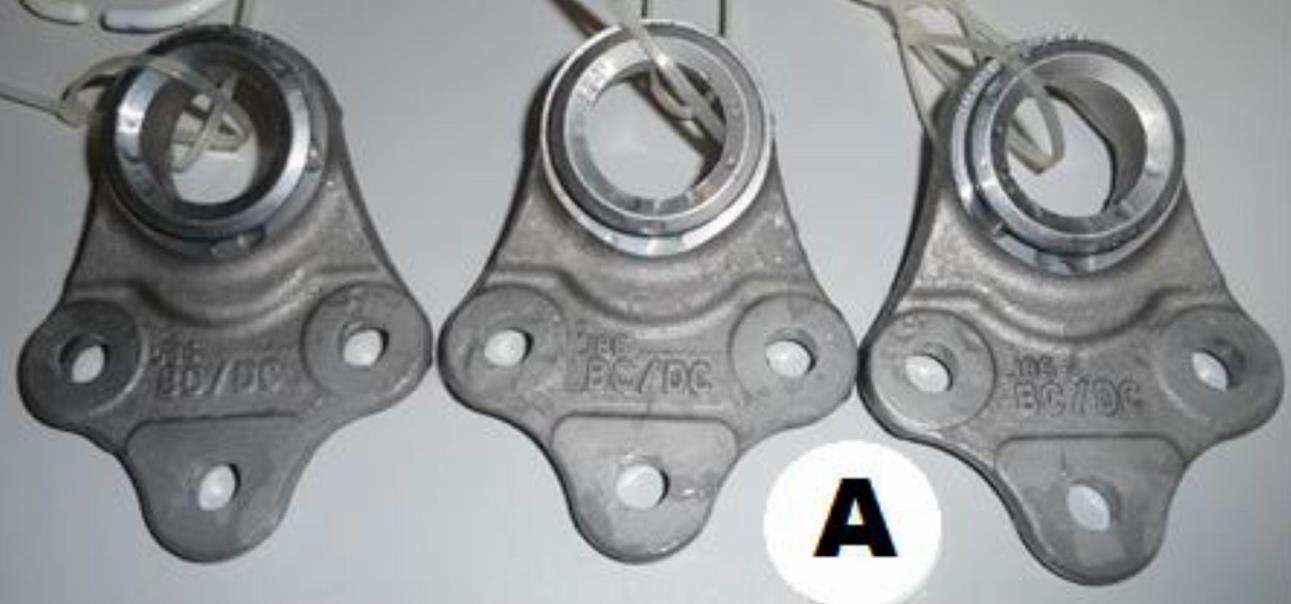
Fig. 2 Sample without heat after 240h
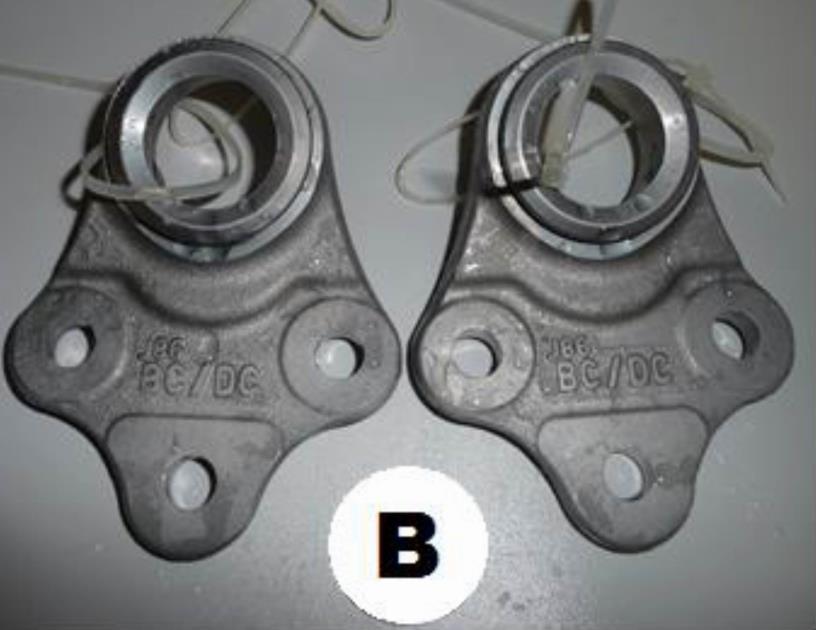
Fig. 3 The sample was heated up to 120 ° C for 24h, after 240hrs
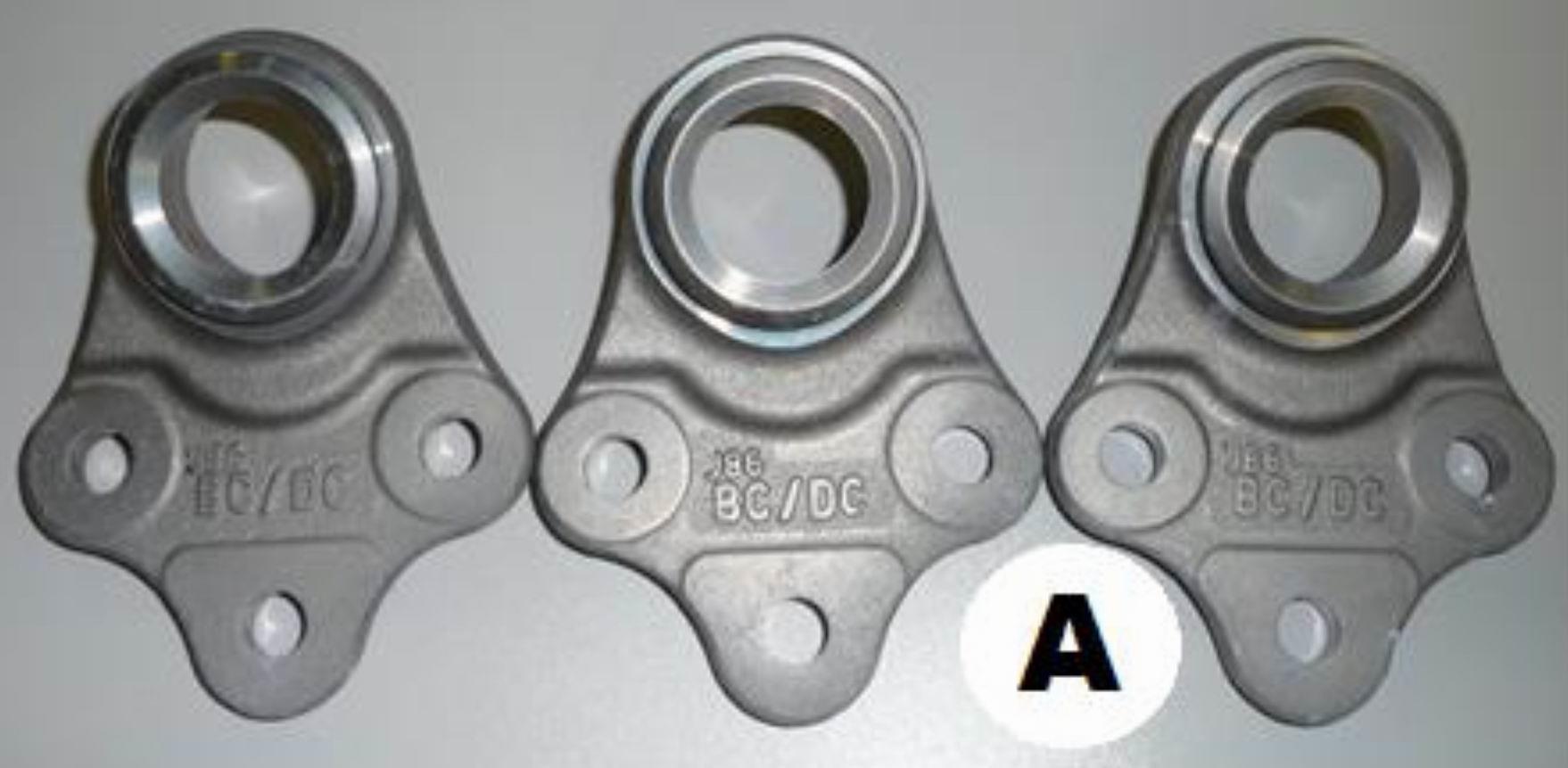
Fig. 4 Sample without heat after 720h
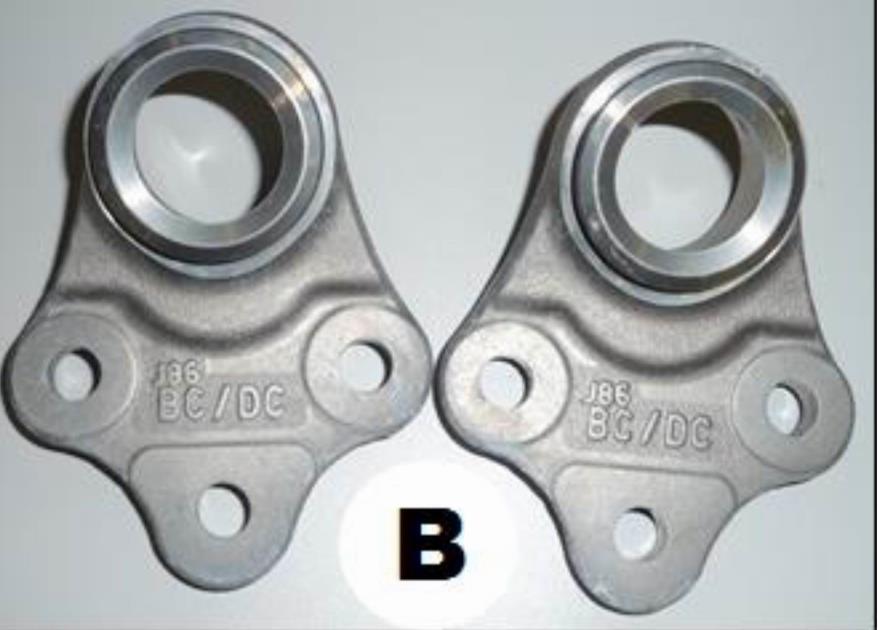
Fig. 5 The sample was heated to 120 ° C for 24h, after 720hrs.
CONCLUSION
The aim was to evaluate the process of surface treatment with Zn-Ni alloy coating, which was applied in the bath line, on the basis of methodical procedure. We carried out a coating thickness control using the Fisherscope X RAY XDL-B on 20 randomly selected components. At this check, we found that the average thickness of the coatings measured was 11.615μm. No thickness was measured on either of the measured components that would lie outside the specified range of 8 to 15µm. During this inspection we also checked the percentage of nickel and zinc in the alloy coating. The nickel ratio in either case did not exceed 15%, which also corresponds to the stated requirement. The highest layer thickness was 13.1μm. The proportion of nickel was 12.6% and the proportion of zinc was 87.4%. The smallest layer thickness was measured at 9.5μm. The nickel content of this layer was 12.7% and the zinc proportion was 87.3%. The result from the measured values that the applied
thicknesses on the different components differs, which is mainly due to the placement of the components on the hinges during the application of the alloy coating in the bath line itself. All the conditions that have been imposed by the customer, namely the thickness of the applied layer and the corrosion resistance of the components, have been fulfilled and the process of applying the Zn-Ni alloy coating is thus capable for final treatment of the components. This coating method is applicable in a variety of areas, but will certainly find its greatest application in the automotive industry, as its corrosion resistance exceeds other coatings composed, for example, of zinc alone.
ACKNOWLEDGEMENT
This paper was created with financial support of the grant project Vega no. 1/0718/17 " Study about the effect of technological parameters of the surface coating in agricultural and forestry techniques for qualitative parameters, safety and environmental acceptability."
REFERENCE
[1] Álló, Š. et al., (2013). Effect of chemical degreasing on corrosion stability of components in automobile industry. In Advanced Materials Research. Vol. 801, special iss. (2013), s. 19--23. ISSN 1022-6680. [2] Álló, Š. et al., (2014). The Influence of Thernal Shock on Zn-Ni Surface in eht
Automobile Industry. In Agricultural, forest and transport machinery and techonologie.
Journal of the Agrarian and Industrial Faculty, Unitersity of Ruse "Angel Kanchev". 2014. Bulharsko, pp. 63-68. ISSN: 2367-5888. [3] Álló, Š., (2011). Qualitatively valuation of surface thicknesses in the automobile industry.
In Tudományos diákköri konferencia. Gödöllő: Szent István Egyetem, 2011, ISBN 978963-269-119-0. [4] Bujna, M., Prístavka, M., Polák, P., Žitňanský, J., Prístavková, M., (2017). Application of fault tree analysis at selected process. In: Bezpečnosť – Kvalita – Spoľahlivosť. Košice. 2017. pp. 37-42 ISBN: 978-80-553-3115-7. [5] Hrubec, J. 2018. Inžinierstvo kvality produkcie. 1. Vyd. Nitra: ES SPU.2018, 174s ISBN 978-80-552-1793-2. [6] Kerekov, S., Gospodinova, N., Delikostov, T., Nikolov, M. (2014). Investigation of the anti-wear performance of adipic acid and polyethylene glycol-200 complex ester as a friction modifier in motor oils.// Journal of the Balkan Tribological Association, No 1,
Vol. 20, pp. 111-115, ISSN 1310-4772. [7] Kangalov, P., (2013). Methods and diagnostic tools. Ruse: Angel Kanchev University of
Ruse, 2013. ISBN 978-619-90013-3-2. [8] Kročko, V. et al., (2008). Valuation of the technologies of surface treatments for automobile components. In Naučni trudove : zemedelska technika i technologii, agrarni nauki i beterinarna medicina, remont i nadeždnosť : zemedelska technika i technologii, agrarnye nauki i beterinarnaja medicina, remont i nadežnosť. Ruse, Bulharsko: University of Rousse Angel Kanchev, 2008, s. 76--80. ISSN 1311-3321. [9] Kročko, V. et al., (2013). Determination of coating thickness applied by Zn-Ni method.
In Naučni trudove : zemedelska technika i technologii, agrarni nauki i beterinarna medicina, remont i nadeždnosť : zemedelska technika i technologii, agrarnye nauki i beterinarnaja medicina, remont i nadežnosť. Vol. 52, no.1.1 (2013), s. 257--260. [10]Kročko, V., et al. (2008). Corrosion stability of components surface treated galvanizing.
In Naučni trudove : zemedelska technika i technologii, agrarni nauki i beterinarna medicina, remont i nadeždnosť : zemedelska technika i technologii, agrarnye nauki i beterinarnaja medicina, remont i nadežnosť. Ruse, Bulharsko: University of Rousse
Angel Kanchev, 2008, s. 165--168. ISSN 1311-3321.
[11]Nikolov M., Gospodinova N., Pavlov D., Dimitrov M. (2009). Tribological characteristics at running-in of repaired tractor engines using friction modifiers.//
Industrial Lubrication and Tribology, No 4 Vol.61, pp. 209-212, ISSN 0036-8792 [12]Prístavka, M., Beloev, H., (2015). Engineering of Products Quality. 1. vyd., Ruse: Angel
Kanchev University of Ruse, 2015. 186s . ISBN 978-954-712-655-8. [13]Zaujec, M., (2015). Odolnosť súčiastok pokovovaných zn – ni proti korózií. [diplomová práca], Nitra, 2015.
CONTACTS
Zdenek Donoval, Department of Quality and Engineering technologies, Faculty of Engineering, Slovak University of Agriculture in Nitra, Slovakia, Tr. A. Hlinku 2, 949 76 Nitra, Slovakia
Róbert Procházka, Department of Quality and Engineering technologies, Faculty of Engineering, Slovak University of Agriculture in Nitra, Slovakia, Tr. A. Hlinku 2, 949 76 Nitra, Slovakia
Miroslav Prístavka, Department of Quality and Engineering technologies, Faculty of Engineering, Slovak University of Agriculture in Nitra, Slovakia, Tr. A. Hlinku 2, 949 76 Nitra, Slovakia, e-mail: miroslav.pristavka@uniag.sk
Plamen Kangalov, Department of Repair and Reliability, Agrarian and Industrial Faculty, University of Ruse, 8, Studentska Str., 7017 Ruse, Bulgaria, e-mail: kangalov@uni-ruse.bg
Vladimir Krocko, Department of Quality and Engineering Technologies, Faculty of Engineering, Slovak University of Agriculture in Nitra, Tr. A. Hlinku 2, 949 76 Nitra, Slovakia, e-mail: vladimir.krocko@uniag.sk
Jan Zitnansky, Department of Quality and Engineering technologies, Faculty of Engineering, Slovak University of Agriculture in Nitra, Slovakia, Tr. A. Hlinku 2, 949 76 Nitra, Slovakia, e-mail: jan.zitnansky@uniag.sk







